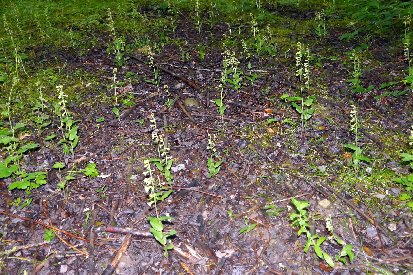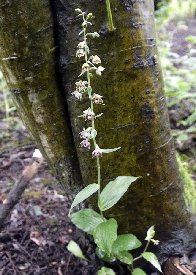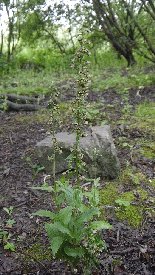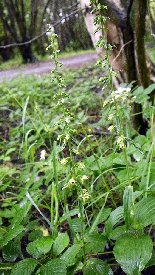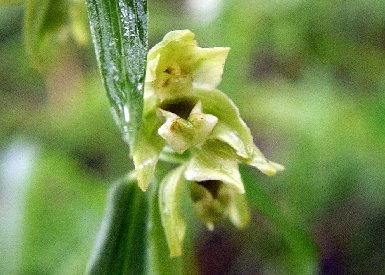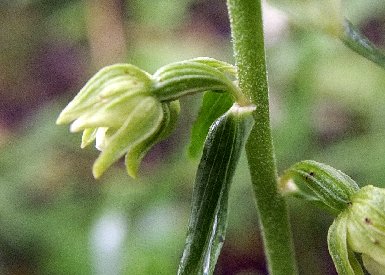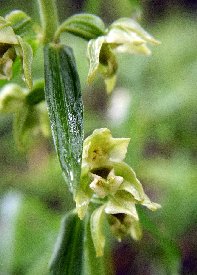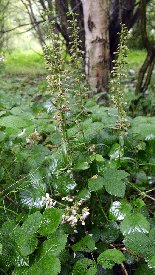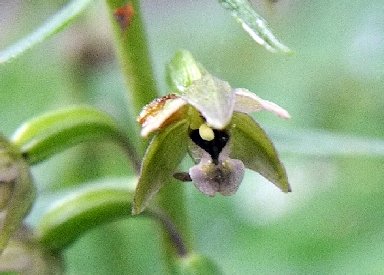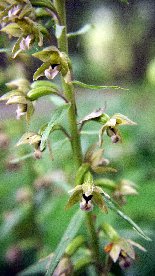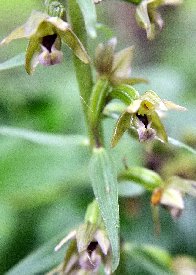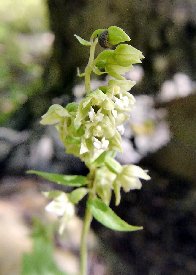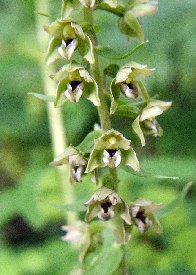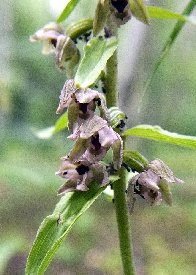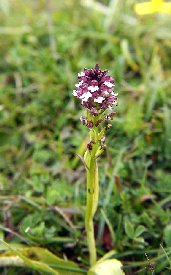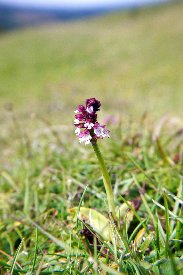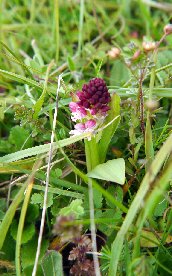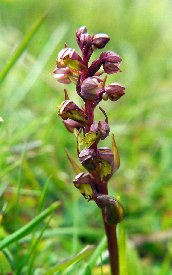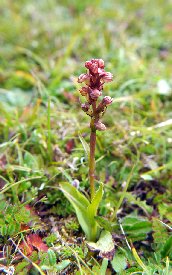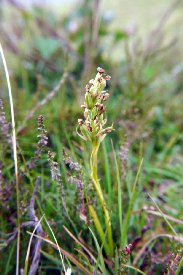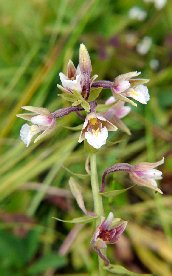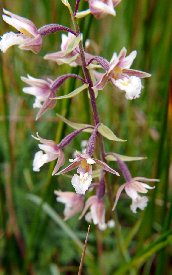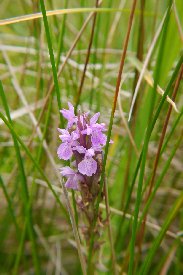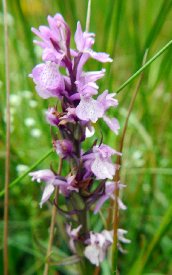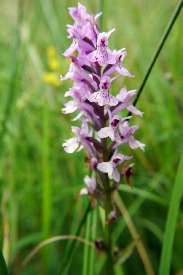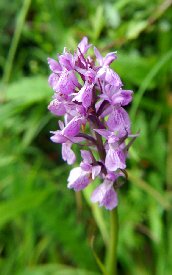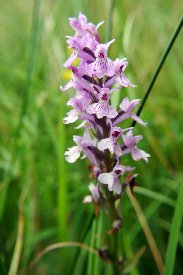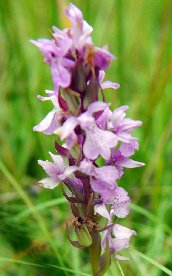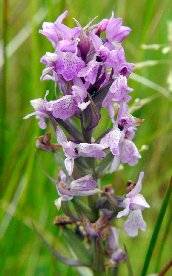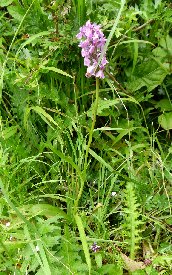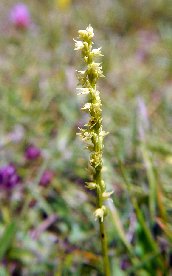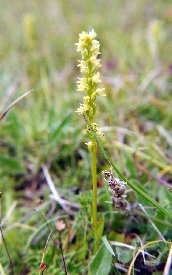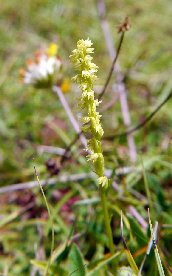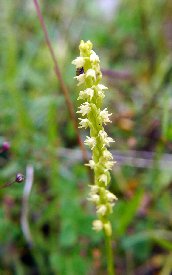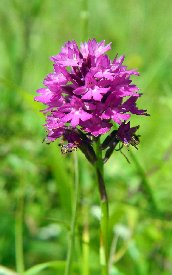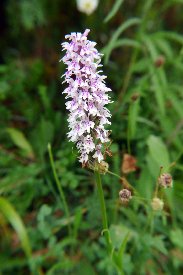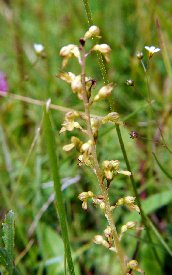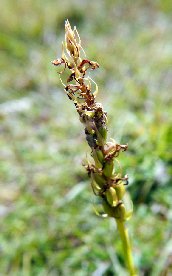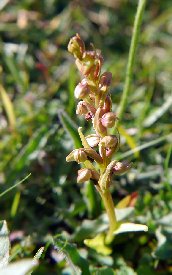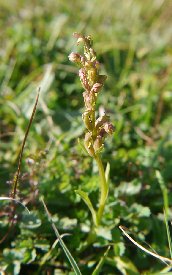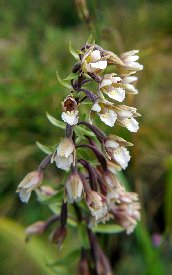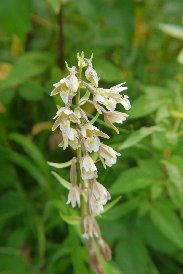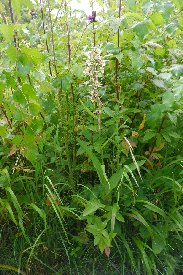|
|
|||||||||||||
|
|
|||||||||||||
 |
|
Alyn Waters Country Park, 7th and 9th July 2020 (SJ 31956 54682) I have returned here for the Helleborines growing on the Visitor Centre side of the park. There are a few plants I want to revisit, but firstly I am knocked-out by the number of Dune Helleborines growing in one small patch under a canopy of trees not far from the VC. There must be over 200. However, I am surprised to find a few Broad-leaved Helleborines there too, including one quite tall specimen. It is rather odd that I haven't noticed these before. Nearby are three Epipactis that I found last year growing close together and I questioned whether any of them were of hybrid origin. One plants with three spikes is clearly a Broad-leaved Helleborine. A second, with two flower spikes, is very pale flowered. The lip has bosses like E. helleborine, and the stem also has the short hairs characteristic of that species. However the flowers (in the flesh) just do not have the same texture of that, and the ovaries are quite shiny. This year I can see no suggestion of self-pollination, but all the open flowers have long since lost their pollinia. They are however, noticably smaller flowers than the E. helleborine growing close by. The third has three stem with flowers of a similar appearance. Photos of these from last year were seen by an expert who concluded the flowers did show evidence of self-pollination and were noticably smaller than for a typical E. helleborine. considering the close proximity of both parents and the large numbers of the usually self-pollinating parent I would stick my neck out on these and say they are a Epipactis hellborine x dunensis hybrid. The flowers do have a bit more of the delicate appearance of dunesis as opposed to the more solid look of helleborine. We also go to the little glade discovered last year where both both species also grow together, but, presumably due to there being less light, they are still in bud - give it a couple of weeks for a return. This year, for some reason, the more colourful Broad-leaved Helleborines seem to have hidden away and we are left with rather pale and dull flowering spikes. There does, however, seem to be more growin under the birches just as the path kinks to the right near the entrance. Many are not quite out yet, but we have a walk along paths otherwise unexplored by us (it is a fairly extensive but monotonous woodland) and find some more plants here and there. Ladle Hill, 14th July 2020 (SU 47883 56846) With the hospitality opening up after lockdown I decide it is time to get out further afield for a few days to see something other than BLHs. Unfortunately it is quite late in the season so there are fewer areas to choose from. I decide on Hampshire, where I may see some thing to tick off my list if I am extremely lucky. It is also rather soon after the easing of restrictions. Having a coffee out where the tables next to you are barred with black and yellow tape all over them is like sitting in a crime scene investigation. The hotel we have booked, we subsequently found, has really overdone the distancing and this side of the short holiday is particularly joyless. The Frog Orchids were actually marked with a ring of while chalk stones, and the same plants featured on social media stimulating some discussion. Marking plants like this is a subject where everyone will have an opinion and nobody is either right or wrong. On the For side marking them like this does help prevent them being accidentally trodden on, and this is especially important where there are so few. On the other hand doing this or placing stick markers spoils the thrill of the chase for others. You cannot say that you actually found them. Great if you want to dash from site to site, and snap a few pics, but it is when you do actually have to hunt around that you can find other things of great interest. Whether or not I would have dseen these without the markers is a moot point. I think perhaps I would have. I removed the stones for my photos, but replaced them afterwards. However if the next visitor threw them away I would have no issue with that either. New Forest, 15th July 2020 (SU 20052 00482) You may be wondering why I am saying simply New Forest and providing but one map link. Well, the day starts off on the wrong foot. First stop was meant to be Stoney Cross, but we found that there was no right turn to there from A31, so decided to do our stops in reverse order. We had quite a list and actually visited most - Matley, Hlmsley, Boundway and so on. I had hopes of Bog Orchids, Heath Spotted Orchids, and perhaps even the [ulchella form of Early Marsh Orchid if some were a tad late in flowering, but the only orchids seen were a few gone over Heath Fragrant Orchids roadside near Thorney Hill; this was one of the suggested locations for this species. Even Stoney Cross, when we actually found a way there, yielded not a single bog orchid despite spending half the afternoon carefully studying several boggy flushes. To use the modern vernacular I found the New Forest to be pants for orchids. True there are some nice spots and the ponies and cattle are nice to see, but for orchids in July it is a wste of time. Perhaps the ponies ate all the orchids. Greywells, 16th July 2020 (SU 72097 51162) A site that came with multiple recommendations, but somehow failed to live up to higher expectations.It is a long thin damp area bordering the River Whitewell. In fact much was off limits in the absence of wellies, and some off limits to casual visitors. I had expected to see pure white forms of the Marsh Helleborines, but only saw those of normal colours (which are in fact more attractive but come 10 a penny). There was no sign of any Marsh Fragrant Orchids. When you have Southern Marsh Orchids living in a Hampshire fen you naturally think of one thing - ssp schoenophila, and I certainly hoped to see some here. There were SMOs here, but though I could find plants with long slender leaves and others with folded labella that had a longer pointed central lobe, there were none that I thought looked like the D. traunsteineroides that this subspecies was was originally identified as. There were none with prominent lip marking for instance. What I did see was a gradation from more typical SMO to those that could perhaps be ssp schoenophila. Perhaps the two subspecies were hybridising and back-crossing. Incidentally, these were still flowering quite reasonably considering the date and being further south than my usual haunts. We went down to the bottom of the reserve but found nothing else of interest, but much of it is very soggy and effectively out of bounds. There is also part at the northern end not for casual visitors so perhaps there is more to see here than meets the eye. Noar Hill, 16th July 2020 (SU 74037 31990) In medieval times chalk was dug out of this hill, crushed, and spread onto the land to improve the soil. The pits are still here today and make an ideal wildlife haven with the cropped grass providing a home to a myriad of wild flowers .... including orchids. Primarily we are here for the Musk Orchids, and while they may be small and yellowish it is not long before I realise that they grow here there and everywhere. Elsewhere in the UK where I have seen them they seem to grow on SW facing slopes, packed into a band across the. Here they have thrown the rule book away and are just dotted around. Best to keep to the tracks (there are plenty) to avoid treading on them and other plants. As you get down to photograph them you can just detect their honey scent, When using maps to provide the map link for here I see that the pointer for Noar Hill is beyond the trees to the south of where we spent our time looking. Have we missed a good bit? Perhaps not. Where we were certaily looks wilder and not agricultural. At nearby Old Winchester Hill we saw but four Common Spotted Orchids. St Catherines Hill, 17th July 2020 (SU 48360 27728) Another day another hillfort to climb, and they do not seem to be getting any easier. This one is just within the city limits of Winchester. Sadly we can only find one species, but happily it is the Frog Orchid; just a patch of nine and we do scour the whole hilltop for more to no avail. These are a much paler reddish brown than those at Ladle Hill Dry Sandford Pit, 17th July 2020 (SU 46674 99705) A stop off orchid site on our way home, and to an extent it disappoints. The water levels are down a bit from when were last here two years ago and I can wander further into the boggy bit. However there are just Marsh Helleborines and Common Spotted Orchids to see; yet again no sign of Marsh Fragrant Orchids. The one var albiflora is a decent sized specimen though.
|
||
|
|
||
|
|
||||||||||||||
